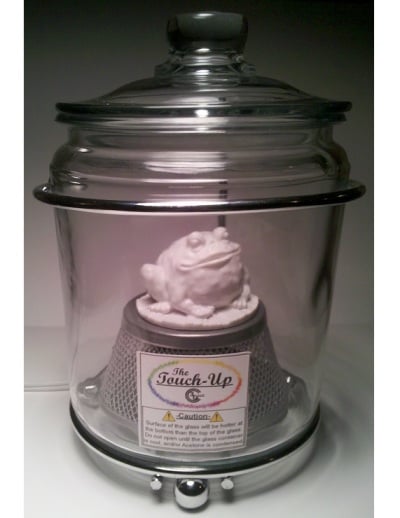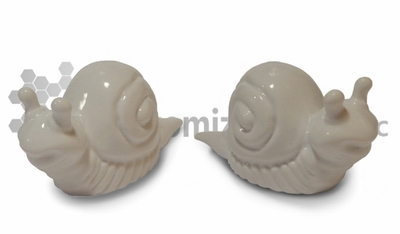
A new product from startup 3D Customization hopes to simplify the difficult process of smoothing ABS 3D prints with a new smoothing device: The Touch Up.
The Touch Up uses the acetone process, which we feel can be dangerous if not done properly. Acetone is a colorless, highly flammable substance. The acetone smoothing process involves heating liquid acetone slightly until it vaporizes, then dipping your rough 3D print into a chamber holding the heavier-than-air hot vapor. The vapor is absorbed by the ABS, which softens and smooths the print.
The problem has been that the flammability of acetone is notorious. It has a very low flash point and even as low as 2.5% mix with air can cause a flash fire. Even worse, acetone vapor can invisibly creep along a floor to reach an ignition source quite distant. For this reason we’ve been suspicious of using homemade acetone approaches for smoothing.
That changes with the introduction of the Touch Up. It’s an integrated glass vapor chamber and heating unit, which contains just the right amount of acetone for smoothing. In fact, if used properly, the Touch Up will have no acetone residue when a smoothing operation is complete. The Touch Up includes heating controls and indicators to indicate activity.
Their Indiegogo launch campaign has started slowly, but we believe this could be one of the most inexpensive ways to vastly improve your personal 3D printing setup. The alternatives? Hugely laborious hand sanding or purchasing a USD$30K smoothing unit from Stratasys. For as little as USD$100, you can have a Touch Up beside your 3D printer.
Via Indiegogo



We have been looking into different chemicals and solutions for vapor smoothing PLA, but vapor smoothing PLA would result in vaporizing dangerous chemicals, potent enough to be lethal if not handled properly. Oddly enough Acetone is an organic chemical which can be bought in its virgin state, and vaporizes at lower, safer temperatures.
We here at 3D Customization Company use ABS over PLA due to its strength, temperature resistance, and ability to achieve injection molded results with the simple process of Vapor Smoothing using The Touch-Up. We recommend to model designers to use ABS due to the ability to get beautiful post-production results, or even pre-production if hand painting your models. Having a smooth surface allows for better, smoother, and more detailed final products/models.
This is such a nice solution for smoothing low-res prints! I wish it worked with PLA as well… I only knew one soluble for PLA but it's such a dangerous material I wouldn't like to use it at home. Any tips for vapor-smoothing PLA print?
This sounds great! Thanks for the nice share!
If you don't know what an MSDS sheet is, then please be sure to understand that Acetone: http://www.ccohs.ca/oshanswers/chemicals/chem_profiles/acetone.html
It is not a good thing to breath or handle (expose to your skin) on a regular basis.
Just take precautions.